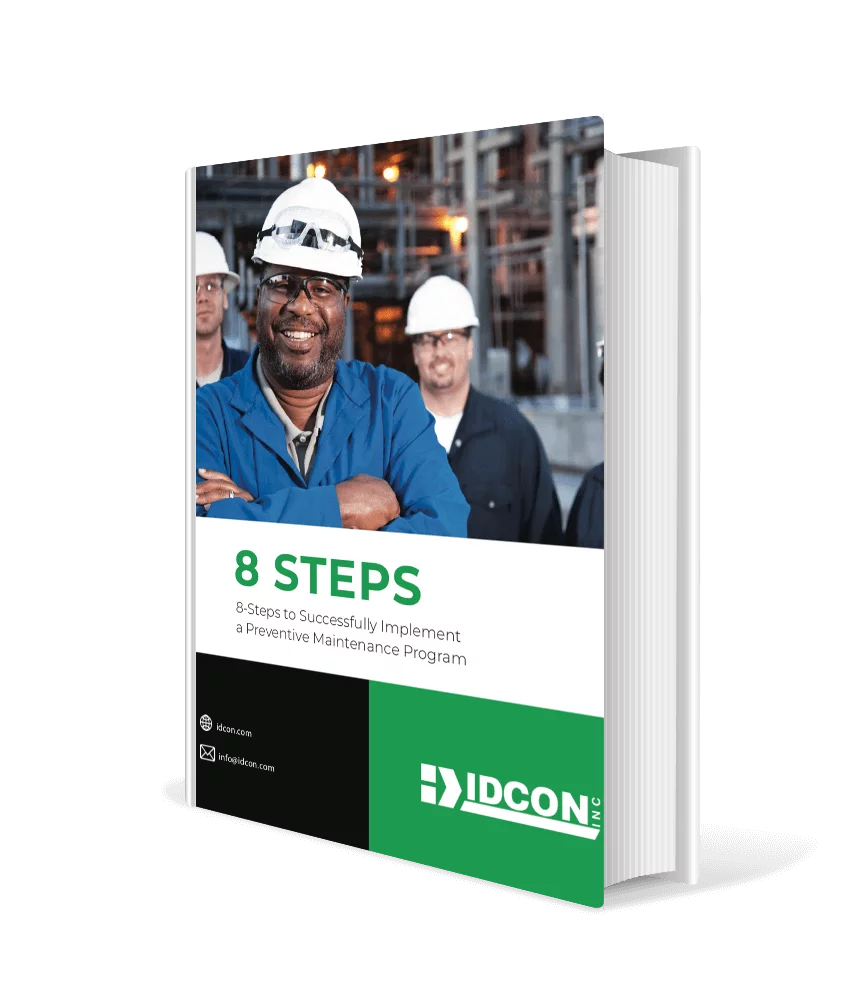What guidelines would you give for the frequency of preventive maintenance inspections?
This is a question I often get so I like to offer some guidelines from the real world.
The short answer to this question is that you have to use your experience and common sense supported by a logic decision structure.
For you who want to indulge in the details of setting PM inspections, let’s begin with defining what we mean with inspections.
Inspections include all objective inspections (we measure something) by observations or by using an instrument, for example, a vibration analyzer, an infrared camera, a volt meter, a flow meter, or ultrasonic. Inspections also include all subjective inspections (look-listen-feel-smell).
In order to set the frequency of preventive maintenance inspections, we need to understand what "failure developing period" is.
Failure Developing Period (FDP) (Called Pf Curve by some)
The FDP is the time period from when it is possible to detect a failure until we have a breakdown. A failure is when a system or equipment is operating correctly within given parameters but has signs of problems.
For example, a centrifugal pump may be cavitating, but is still providing the required flow for the operation; we have a failure, but not a breakdown.
The cavitations in our example will eventually develop into a breakdown. The breakdown occurs when the pump is unable to perform its intended function.
The FDP is the time difference between the failure and the breakdown. If the pump started to cavitate at 6 am and it broke down 6 pm 6 days later, the FDP is 156 hours.
Preventive Maintenance Inspection Frequency
The theoretical answer to the question is very simple. The inspection frequency should roughly be FDP/2.
For example, if the estimated failure developing period is 14 days and we need some time to plan and schedule the corrective maintenance for that failure to avoid a breakdown.
I think a reasonable inspection frequency is 7 days (FDP/2) in this case. If the inspection frequency is longer than 14 days, we may miss both the failure and we will have a breakdown. So, our rule of thumb is Inspection frequency = FDP/2.
The real problem is that we don’t know what the FDP is. There is no standard, no documentation and most plants do not have any history on FDP.
Preventive Maintenance Inspection Tools changes the FDP
We also need to understand that the FDP changes when we have access to better tools.
For example, we may be able to detect a problem with a pillow block bearing by listening to it with a stethoscope.
This method may give us a warning period of a few days (on average depending on the situation).
However, if we use a vibration analyzer, we can probably detect the same failure at least 6 weeks in advance.
The failure is the same, but the FDP has changed! For the most part, the only reason we buy inspection tools is to extend the FDP with more accuracy.
In reality, the ability to detect a failure during the FDP also depends on the person’s ability to do the inspection, environment (lighting, temperature, indoor vs. outdoor, etc), and operational parameters at the time of inspection, equipment design and accessibility, and much more.
Many Variables
Each component has many failure modes, and each failure mode can have different FDPs.
We also know that each FDP may change depending on the inspection tool, technique, the person doing the inspection, and more.
On top of all this, each component is running at different speeds, different environments, and different loads.
At this point of reasoning, many plants do the wrong things. Some plants make the conclusion that a massive study needs to be done in order to find the answers to all these questions.
Why is this not a good approach?
This is not a good approach because in 999 times out of 1000, you will not have the data you need to do the analysis and even if you did, the best bang for the buck is usually to get your people trained and then out there doing inspections rather than performing a big analysis.
What you will end up with when you do a complicated analysis without data is a guess based on a lot of work, so let’s not do the complicated analysis and instead do a guess using our experience and cut out 99.9% of the work.
Example
Let’s look at some typical problems with an AC Motor.
This example does not include all failure modes, for example, if you look at the bearing manufacturer manual, a bearing has over 50 failure modes.
Therefore we need to look at the most common and most likely problems.
Example: AC Motor, 125 HP, 80% load, 24/7 operation, dusty environment.

As mentioned above there are many more failure modes, I have picked some common problems to illustrate my point.
If we look at the right column there are many different inspection frequencies even when we do a simplified analysis.
Our estimates are just guesswork and will vary depending on who is doing the inspection, the type of tool, and the environment, so we should not take the numbers too seriously, they are estimates.
I would therefore look at some of the shorter inspection intervals and then add some of the longer interval inspections to those since we may as well do the longer ones when we are there.
They don’t take too long time to do and we are just guessing the intervals.
In this example we could group them as follows in a typical process plant environment:

Other Preventive Maintenance Inspections
If it is a critical motor perhaps you want to do a full motor analysis or a test of leakage to ground.
Common Logical Error
Preventive Maintenance Inspection frequencies are based on FDP, not the life of the component, nor the criticality of the equipment function.
The life of a component has nothing to do with inspection frequency. For example, a world-class plant has an average motor life of 18 years, some motors last 8 years some 25.
However, the FDP for the most common failure modes for these motors is most likely in the 1-4 week span, so life statistics have nothing to do with inspection frequency.
A common erroneous argument is “we have inspected this component for 3 years and have not found any problems.
Therefore, we extend the inspection frequency from one week to four weeks”. The fact that you have not found a problem has nothing to do with the FDP, it hasn’t changed just because the component is running without any indications of a failure.
Once that component fail, it may be after 15 years, the FDP may still be two weeks and you need to catch it if it is financially viable to do so. If you change the inspection period to four weeks, it is roughly 50 % + risk that you miss it.
Criticality does not affect the FDP, but it might be a factor when we assign inspection frequency.
The criticality of the motor is a deciding factor when estimating the financial pay off and may change the selection of the inspection frequency because we are uncertain of the FDP.
The FDP is a guess. So, a very critical component may be checked more frequently because we don’t really know the FDP. It is an insurance policy.
Summary
- Inspection frequencies are based on FDP, not criticality or component life.
- The FDP for all failure modes is quite unfeasible and impractical to predict. However, we can make a pretty good guess to what it is.
- If you don’t have very good historical data as to what the FDP is, don’t waste your time making an elaborate study, make a reasonable guess, it is what you will end up with any way with a study without reliable data.
- If you have the FDP data, ask if it isn’t better to spend the effort in training people in how to do inspections and planning and scheduling of corrective actions instead of making an outsized study. It is much more cost-effective to spend the time on making the execution of good inspections a reality.
Trying to develop your own Preventive Maintenance Program?

Download our free 8-step guide to successfully develop your own Preventive Maintenance Program




